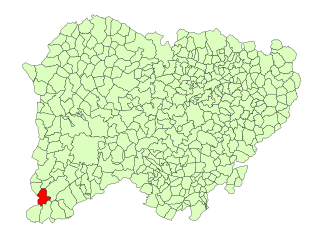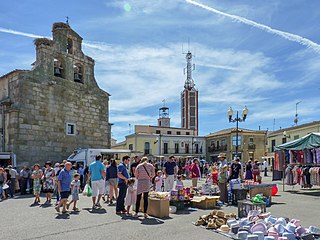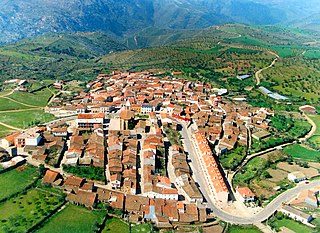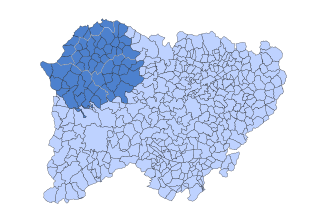Music
- Almendra (band), a rock band from Buenos Aires, Argentina
- Almendra (Almendra album), 1969
- Almendra (Aldemaro Romero album), 1957
Almendra may refer to:
Mora may refer to:

Salamanca is a province of western Spain, in the western part of the autonomous community of Castile and León. It is bordered by the provinces of Zamora, Valladolid, Ávila, and Cáceres, and on the west by Portugal. It has an area of 12,349 km² and in 2018 had a population of 331,473 people. It is divided into 362 municipalities, 11 comarcas, 32 mancomunidades and five judicial districts. Of the 362 municipalities, more than half are villages with fewer than 300 people.
Santana may refer to:
Monforte may refer to:
A huerta is a fertile area, or a field within a fertile area, common in Spain and Portugal.
El Campillo may refer to:

Almendra is a village and municipality in the province of Salamanca, western Spain, part of the autonomous community of Castile and León. As of 2016 it has a population of 166 inhabitants.

Casillas de Flores is a village and municipality in the province of Salamanca, western Spain, part of the autonomous community of Castile-Leon. It is located 123 kilometres (76 mi) from the city of Salamanca and as of 2016 has a population of 183 people. The municipality covers an area of 42.6 km2 (16.4 sq mi).

La Fuente de San Esteban is a village and large municipality in the province of Salamanca, western Spain, part of the autonomous community of Castile-Leon. It is located 54 kilometres (34 mi) from the provincial capital city of Salamanca and has a population of 1,358 people.

San Felices de los Gallegos is a village and large municipality in the province of Salamanca, western Spain, part of the autonomous community of Castile and León. It is located 102 kilometers from the provincial capital city of Salamanca and has a population of 442 people, with a 2017 Wolfram Alpha estimate placing it at 427. . It is situated within the Arribes del Duero Natural Park.

Fuentes de Oñoro is a village and municipality in the province of Salamanca, western Spain, part of the autonomous community of Castile-Leon. It is located 124 kilometres (77 mi) from the provincial capital city of Salamanca, and has a population of 1058 people. It was the site of a significant battle in 1811, during the Peninsular War.

Villaseco de los Reyes is a village and particularly large municipality in the province of Salamanca, western Spain, part of the autonomous community of Castile-Leon. It has a population, according to INE 2016, of 350 people. The municipality covers an area of 136.05 km² and lies 772 meters above sea level.

Galindo y Perahuy is a village and municipality in the province of Salamanca, in western Spain, part of the autonomous community of Castile-Leon. It is located 22 kilometres (14 mi) from the provincial capital city of Salamanca and has a population of 693 people.
Fuentes may refer to:

The Almendra Dam, also known as Villarino Dam, in Salamanca, Spain, interrupts the course of the River Tormes five kilometres from the village from which it takes its name: Almendra. It was constructed between 1963 and 1970.

La Fregeneda is a municipality of Spain located in the province of Salamanca, Castile and León. As of 2016 the municipality has a population of 337 inhabitants.
Real may refer to:

Almendra is the self-titled debut studio album by Argentine rock band Almendra which was released in 1969 on Vik, a subsidiary of RCA Victor. To distinguish it from the band's next release, Almendra II, it is also known as Almendra I. The album represented the first full-length musical endeavour of nineteen-year-old Luis Alberto Spinetta, having formed the band in the mid 1960s along with Emilio del Guercio, Edelmiro Molinari and Rodolfo García. The famous artwork, showing a crying man with a toy arrow stuck on his head, was designed by Spinetta to embody the different lyrical themes of the album.

Comarca de Vitigudino is a comarca in the province of Salamanca, Castile and León. It contains the following subcomarcas:
The Fregeneda–Almendra pegmatitic field is a geologic area in the Iberian Peninsula extending across the Portuguese district of Guarda and the Spanish province of Salamanca. Part of the Central Iberian Zone, it is located in the western part of a narrow E–W metamorphic belt. It consists of a variety of granitic pegmatites, where some rocks are rich in lithium. The Li minerals include spodumene, petalite, lithian muscovite and montebrasite.